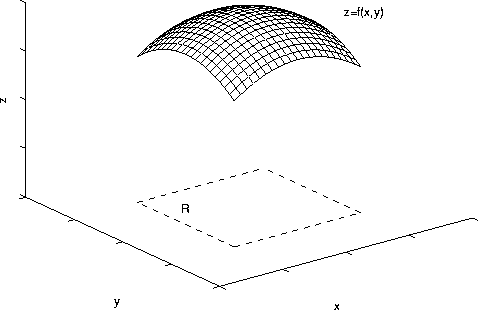MathJax TeX Test Page
A major application of line integrals deals with the work done by moving through a force field. So, imagine a submarine moving around the violent ocean. The current at each point is different, so it's nontrivial to caluclate the work done by moving from one place to another.
Now, the work is the sum of all of the $\Delta{}W$s. When the area you're looking at is so small, there is a constant force acting upon a point, and the direction is constant. Recall from section 14.3 that the work down by a constant force along a direction $V$ is $F \cdot V$. Using that, we can say
$$\Delta{}w_i = F(u_i, v_i, w_i) \cdot < \Delta{}x_i, \Delta{}y_i, \Delta{}z_i >$$
$$ = M(u_i, v_i, w_i)\Delta{}x_i + N(u_i, v_i, w_i)\Delta{}y_i + P(u_i, v_i, w_i)\Delta{}z_i$$
So, $$W = \int_C M(x,y,z)\, \mathrm{d}x + N(x,y,z)\, \mathrm{d}y + P(x,y,z)\, \mathrm{d}z$$
Finally, we can say that
$$W = \int_C F \cdot T\, \mathrm{d}s$$
$T$ is the unit tangent vector, and recall we're taking the dot product of many constant-direction works, so we need the unit tangent vector.
In addition, this is equal to $\int_C F \cdot dr$, and $dr = dxi + dyj + dzk$.

